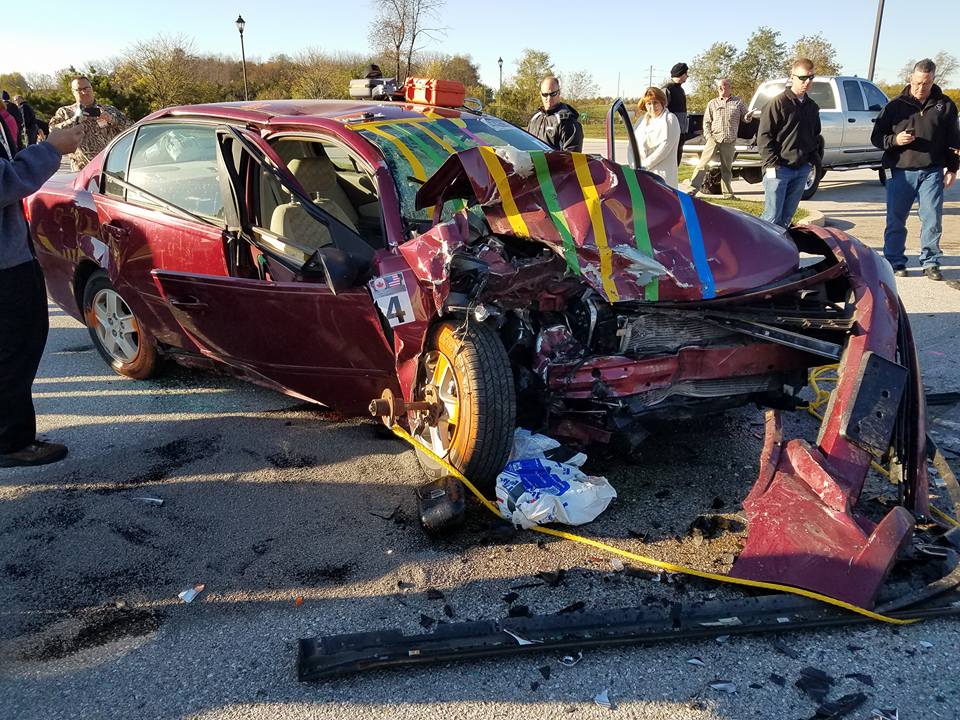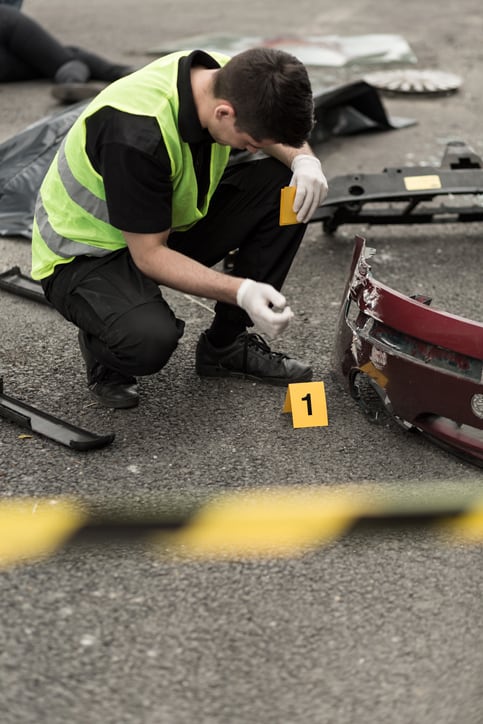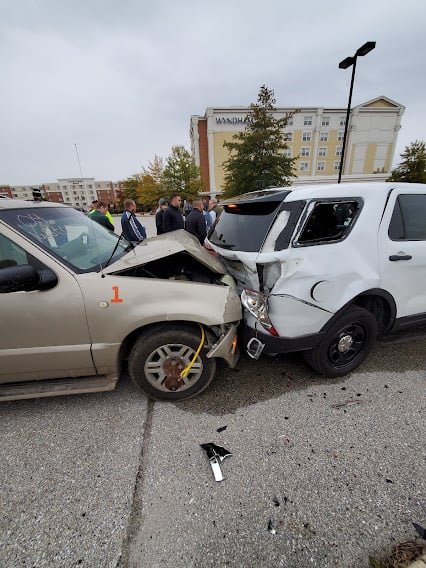What equipment does a crash reconstructionist need to properly document a crash scene?
To the general public, a traffic collision is often referred to as an “accident.” However, most of the time a collision isn’t an “accident” at all. Instead, the crash is a direct result of a law(s) being violated. For instance, crashes may be the result of:
- Speeding
- Reckless driving
- Driving under the influence
- Running red lights or stop signs
- Driving with a suspended license
- An illegal U-turn
- Illegally passing another vehicle
- Failure to yield
- Road rage
- Racing on a public road
Penalties for offenders can range from citations to jail time based on what laws were broken, the severity of the collision, property damage, and whether injury or death resulted from the crash.
What is crash reconstruction?
Crash reconstructionists have the responsibility of determining the cause of a collision and whether any laws were broken in the process. They must assemble each piece of evidence, rather like a puzzle, to form a conclusion about the crash. When a crime has been committed, crash scene investigators may work with prosecutors to present the facts in court. Ultimately, the job of a crash reconstructionist is to apply the laws of physics and other known scientific concepts to the evidence at hand. This allows them to determine the sequence of events in a crash.
Crash Scene Investigators must be properly equipped to perform their job. This means they must possess both the know-how and certain basic equipment. After hundreds of hours of training, including time spent reconstructing staged collisions, one can become a certified reconstructionist. Continuing education is encouraged and may be required to keep any certifications current. This may include time at conferences and training to use specialized reconstruction equipment. ACTAR (Accreditation Commission for Traffic Accident Reconstruction) accreditation is widely recognized as the gold-standard when it comes to crash reconstruction credentials. The organization is an objective, third-party and a crash reconstructionist must meet certain prerequisites just to sit for the exam.
Crash reconstruction tools vary agency to agency, depending on department size, budget, responsibilities and needs. Keeping that in mind, below is our comprehensive list of the tools needed to document a crash scene.
Crash Reconstructionist Tools:
1. Digital Camera
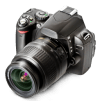
Thorough documentation is a must when it comes to crash scene investigation. A high-quality digital camera is a tool that is used at every single collision scene. Evidence must be captured in true, accurate and detailed form. Along with the camera itself, an investigator should carry extra memory cards and spare batteries, along with a flash unit, tripod, sync-cord, macro-lens, markers and scales.
2. OSCR360
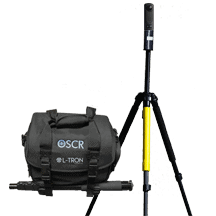
Remember that thorough documentation we just talked about? OSCR360 captures a crash scene in 360-degrees, from the ground to the sky, within minutes. With a 27-ft tripod, OSCR can also capture aerial 360-images (similar to a drone). These images can show approach and departure angles, area of impact and the final resting locations, from vantage points that can be difficult to capture with a DSLR camera. OSCR is also beneficial in showing driver perspective coming up to an intersection, depicting view obstructions and revealing blind spots within a vehicle. Reviewing the OSCR photos after the initial investigation allows you to revisit the scene, and can point to scene details that may have been initially overlooked. OSCR assists investigators in clearing the road faster, depicting the driver’s view, capturing the inside and undercarriage of the vehicle, and ensuring that no evidence is missed during your investigation. OSCR360 is one of the invaluable tools needed to document a crash scene.
3. Physical Evidence Collection Materials

At a collision scene, you never know what you might encounter. It is best to arrive prepared with all of the evidence collection tools you would bring to a crime scene. For example, you’ll want to have protective gear, evidence markers, packaging materials, latent print supplies, and documentation equipment. Click here to see a comprehensive list of tools and recommendations from our Law Enforcement support team.
4. Drag Sled
A drag sled is used to determine the coefficient of friction (also known as drag factor). Typical collision calculations require determining the weights of the involved vehicles, measuring the distances they slid or rolled, and measuring the drag factor of the roadway. These are particularly useful when an accelerometer is not available or the nature of the collision scene makes it unsafe to conduce accelerometer-based skid testing.
5. Accelerometer
This electromechanical tool is used to measure roadway friction at the crash scene, as well as a vehicle’s acceleration and breaking performance.
6. EDR Retrieval Software
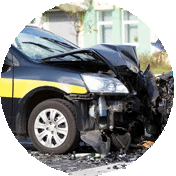
The majority of today’s auto manufacturers equip vehicles with control modules that collect data while the vehicle is operating. Essentially, it’s the “black box” of a vehicle, similar to the black box investigators try to retrieve from an aircraft crash. Known as the Event Data Recorder (EDR), this black box collects data about crashes that exceed a certain severity threshold, often – but not necessarily – deploying supplemental restraint systems such as seatbelt pre-tensioners and airbags. For investigators, EDR retrieval software simplifies the process of retrieving data from the EDR. There is a wealth of information to be gathered from the EDR, such as crash force and duration, number of impacts, pre-crash vehicle operational dynamics, braking data, post-impact speed, vehicle roll angle, position of the front seat, and warning signals/system notifications that may have been activated.
7. Vehicle Statistics Software
Vehicles of today have dozens of computer systems, many of which are collecting data when the vehicle is in operation. Investigators can benefit from accessing the Electronic Control Units (ECUs), which collect everything from information about windows and locks, to HVAC, to vehicle entertainment and information systems. Vehicle Statistics software retrieves and analyzes this information, alerting investigators to GPS location, emergency calls made, whether a driver was accessing music, text, WiFi, or other technology, and vehicle diagnostics and maintenance information.
8. Measurement Tools

Measurements are required at most collision scenes. Measurement tools range from simple and inexpensive tape measures, to electronic total work stations, to expensive laser scanners. Careful and skillful use of tape measures can yield acceptable accuracy but can take a long time to map a scene.
A total station is an electro-optical instrument, often used by surveyors, which measures horizontal and vertical angles, as well as slope distances to individual objects or items of evidence.
Laser scanners, as the name implies, emit laser beams in a programmed scanning pattern that covers 360-degrees around the horizontal axis of the scanner, and most of the area around the vertical axis. The scanner can take millions of measurements to create a “point cloud” representing everything the laser struck during the scan.
9. Drones
As a newer technology, drones are certainly not required for crash scene investigation, but they are rapidly supplementing other measurement tools as they continue to gain acceptance. After securing the scene, evidence markers are manually placed, along with scale reference measurements. From there, drone flights capture photos from various heights, and measurements can be taken later, once the crash scene is cleared.
Just like OSCR, drone images can depict a bird’s-eye view of the scene and can provide visual context for tire marks, gouges and other physical evidence.
10. Forensic Diagramming Software
With forensic diagramming software, investigators can input the field data they’ve collected and create 2D and 3D images and animations of the scene and how the crash occurred. In court, forensic diagramming software can complement OSCR360 by demonstrating movement up to and during the crash with forensic diagramming, and true and accurate photo evidence of the scene immediately following the collision.
At the scene of a collision, investigators must work quickly and efficiently. The tools needed to document a crash scene are critical to truly and accurately demonstrate what occurred. Highly specialized training, continuing education and tools developed with modern technology have all advanced the field of collisions reconstruction, so that today’s investigators are set up for success.
